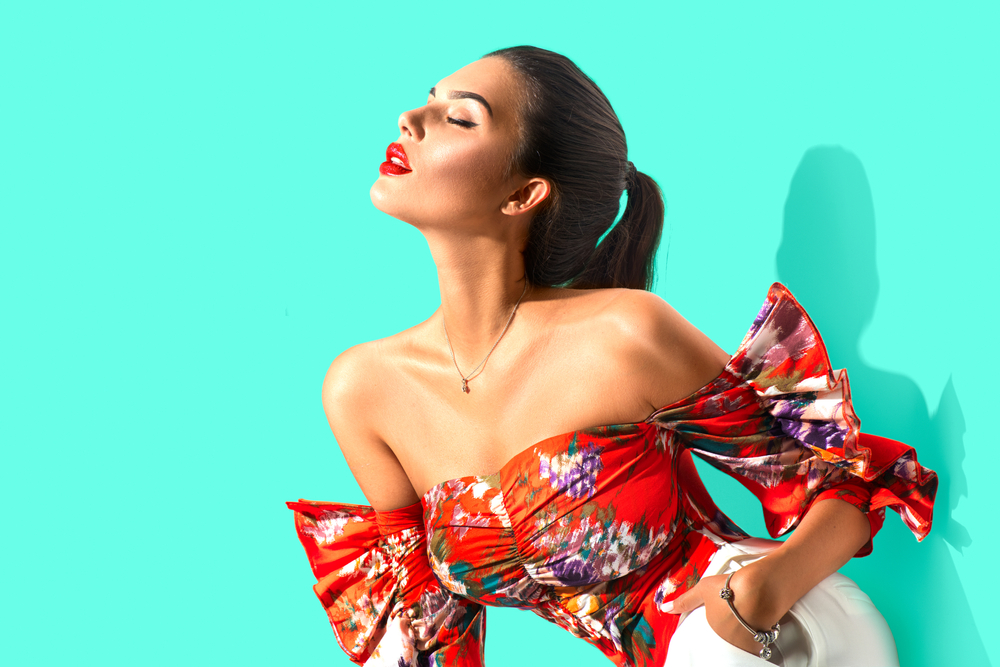
When it comes to the fashion industry, one cannot underestimate the power and impact of a well-executed photoshoot. Behind every mesmerizing image lies the collaboration, effort, and skill of a team of professionals working together to create an artistic masterpiece. At the forefront of this creative process is the model, whose ability to bring life to a designer's vision is crucial. In this article, we will delve into the art and science of modelling , unraveling the secrets to success in the fashion industry.
The Art of Modeling
Modeling is an art form in itself. It requires more than just striking a pose; it demands a deep understanding of one's body, facial expressions, and emotional range. A successful model must possess the ability to convey a story or evoke emotions with every movement and gaze.
1. The Power of Body Language: Models must master the art of body language to effectively communicate with the viewer. Each curve, angle, and posture contributes to the overall composition of the image. From a relaxed stance to a powerful stride, the model becomes a storyteller through their physicality.
2. Portraying Emotions: Emotions play a significant role in fashion photography. A model's ability to channel and convey various emotions can transform a plain photograph into a captivating narrative. Whether it's showcasing joy, vulnerability, or intensity, models must be able to tap into their emotions and translate them through their expressions.
3. Adaptability and Versatility: The ability to transform oneself is a trait highly sought after in the fashion industry. Models who can effortlessly transition between different styles, aesthetics, and concepts are often in high demand. Whether it's a glamorous high-fashion editorial or an edgy streetwear shoot, adaptability is key to success.
The Science of Modeling
While modeling may appear to be purely artistic, there is an undeniable science behind it. From understanding lighting techniques to mastering camera angles, models must be aware of the technical aspects that can make or break a photoshoot.
1. Poses and Angles: Models must have a library of poses at their disposal. Varying poses not only highlight different garments but also emphasize the model's unique features. The science lies in understanding their body's most flattering angles, taking into account lighting and composition.
2. Enhancing Clothes: Modeling isn't solely about showcasing one's own beauty but also about highlighting the designer's creations. Models must learn to enhance the garments they wear, ensuring that each piece shines in the photographs. This might mean adjusting fabric folds, emphasizing details, or creating movement through gestures.
3. Expression through Eyes: The eyes are often referred to as the windows to the soul, and in modeling, they play a crucial role. A skilled model can captivate viewers by wielding the power of their gaze. Whether it's engaging with the camera or a partner in a shoot, the eyes can convey emotion, intrigue, and allure.
Frequently Asked Questions
Q1. How important is physical appearance in the modeling industry?
A1. Physical appearance does play a role in the modeling industry, but it is not the sole determinant of success. Confidence, professionalism, and versatility are equally important. The industry values diversity and uniqueness, embracing different body types, ethnicities, and styles.
Q2. Can anyone become a model, or do you need specific qualities?
A2. Anyone with passion, dedication, and the right mindset can pursue a career in modeling. However, it's essential to understand that it requires hard work, resilience, and adaptability. Having unique features or a specific look can enhance your chances, but it's not a prerequisite for success.
Q3. How do models prepare for a photoshoot?
A3. Models undergo rigorous preparation before a photoshoot. This involves maintaining a healthy lifestyle, exercising regularly, and taking care of their skin and hair. They also research the brand or concept they'll be working with, practicing poses, and familiarizing themselves with the photographer's style.
Q4. How important is teamwork in the fashion industry?
A4. Teamwork is crucial in the fashion industry, particularly during photoshoots. A successful shoot is the result of the collaboration between the model, photographer, stylist, makeup artist, and other professionals involved. Each person brings their expertise to the table, ensuring a seamless execution of the creative vision.
Q5. What role does a model play in interpreting the designer's vision?
A5. Models act as a canvas for the designer's vision. They bring life to the garments, adding a human element to the fashion narrative. By understanding the designer's aesthetic and concept, the model interprets and embodies their vision through their poses, expressions, and movement.
In conclusion, modeling is a harmonious blend of art and science. It requires not only the ability to convey emotions and tell stories through body language and expressions but also an understanding of lighting, angles, and enhancing garments. Success in the fashion industry comes from a combination of talent, hard work, adaptability, and teamwork. Models who invest time and effort in mastering these secrets unveil the key to achieving greatness in their careers.
Other useful resources
- https://en.wikipedia.org/wiki/Category:Modeling_(profession)
- https://en.wikipedia.org/wiki/Modeling_agency